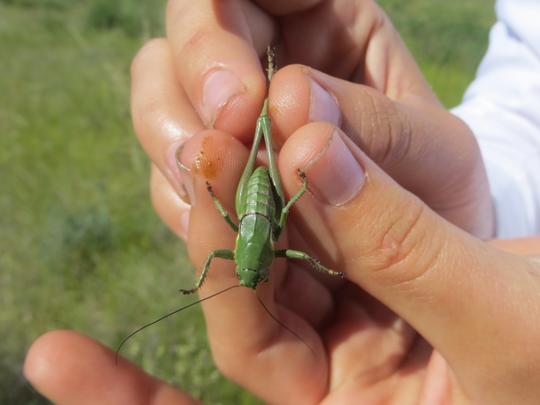We will meet or exceed your expectations. We guarantee it.
Grassland Biosolids Fertilization Impact on Grasshoppers

A team of researchers from the University of British Columbia Okanagan have just published an article in The Rangeland Journal based on data collected at the OK Ranch in 2016. SYLVIS has been fertilizing grasslands at the OK Ranch since 2014, with the main objective of improving pastures for cattle grazing. However, very little is known about how insects respond to biosolids fertilization in arid grasslands. This research looked into whether biosolids applications changed grasshopper abundances, body sizes, and species richness. Measurements were taken during the summer of 2016 on fertilized and non-fertilized pastures using hoop transects and net samples.
Biosolids fertilization increased grasshopper densities by almost 4 times in pastures fertilized 1-2 years prior to sampling. Densities in pastures fertilized in the year of sampling were similar to non-fertilized pastures. There was no clear indication of biosolids fertilization impacting community structure or body size. Grasshoppers are critical prey for many birds and mammals, which suggests biosolids could be an important tool for restoration efforts to improve wildlife populations on grasslands, starting with insectivorous vertebrates.
The article can be accessed from the CSIRO publishing website: https://www.publish.csiro.au/RJ/RJ18075 . For more information about the project, please contact Rene-Carl Dionne.